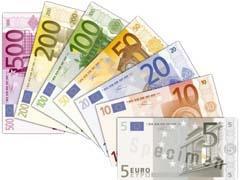
EUROPE: Rail and port expansion projects lie at the heart of a €50bn spending plan to improve Europe's transport, energy and digital networks unveiled by the European Commission on October 19. This will form a key element in the EU budget for 2014-20.
The Commission said the Connecting Europe Facility 'will help to create jobs and boost Europe's competitiveness' through a series of 'targeted investments in key infrastructures'. These would address missing links and facilitate greater use of renewable energy.
The Commission is proposing a 'Europe 2020 Project Bond Initiative' as one of several risk-sharing instruments designed to attract private finance. Commission President José Manuel Barroso said the two initiatives are 'a perfect demonstration of the value added that Europe can provide', adding that 'we are closing the missing links in Europe's infrastructure networks that otherwise would not be built. This investment will generate growth and jobs and at the same time make work and travel easier for millions of European citizens and businesses'.
The Transport element of the Connecting Europe Facility will provide €31·7bn to upgrade infrastructure and eliminate bottlenecks. This includes €10bn ring-fenced for projects in the 14 cohesion countries. The money will be focused on less-polluting modes, notably rail and inland waterways, in order to make transport more sustainable and provide greater travel choices.
Suggesting that around €500bn will have to be invested to create 'a real European network' by 2050 as envisaged in the recent transport white paper, the Commission has grouped the most important projects into 10 cross-border corridors to be developed by 2030. The Core Network has emerged from a review of the TEN-T programme over the past two years, and will be supported by other feeder routes at regional and national level, which are to be financed largely by member states with some EU support.
According to Vice-President Siim Kallas, the €31·7bn allocated for transport will act as 'seed capital' to stimulate further investment, with every €1m spent at European level expected to be matched by €5m from the member state governments and €20m from the private sector.
The 10 core corridors
- Baltic - Adriatic: Helsinki - Tallinn - Riga - Kaunas - Warszawa/Gdynia - Katowice - Brno/Bratislava - Wien - Graz - Klagenfurt - Villach - Udine - Venezia - Bologna - Ravenna
- Warszawa - Berlin - Amsterdam/Rotterdam - Felixstowe - Midlands
- Mediterranean: Algeciras - Madrid/Sevilla - Valencia - Barcelona - Perpignan - Lyon - Torino - Venezia - Ljubljana - Budapest - Ukraine border
- Hamburg - Rostock - Berlin - Praha - Bratislava - Budapest - Arad - Timi?oara - Sofia - Burgas/Turkish border/Thessaloniki - Piraeus - Limassol - Lefkosia
- Helsinki - Turku - Stockholm - Malmö - København - Fehmarn Belt - Hamburg/Bremen - Hannover - Nürnberg - München - Brenner Pass - Verona - Bologna - Roma - Napoli - Bari/Palermo - Valletta
- Genova - Milano/Novara - Simplon/Lötschberg/Gotthard - Basel - Mannheim - Köln - Düsseldorf - Rotterdam/Amsterdam/Zeebrugge
- Sines/Lisboa/Porto - Madrid - Valladolid - Vitoria - Bordeaux - Paris - Mannheim/Strasbourg
- Dublin/Belfast/Glasgow - London - Paris/Brussels + Dublin/Cork/Southampton - Le Havre - Paris
- Amsterdam - Rotterdam - Antwerpen - Brussel/Bruxelles - Luxembourg - Dijon - Lyon - Marseille + Luxembourg - Strasbourg - Basel
- Strasbourg - Danube: Strasbourg - Stuttgart - München - Wels/Linz + Strasbourg - Mannheim - Frankfurt - Würzburg - Nürnberg - Regensburg - Passau - Wels/Linz - Wien - Budapest - Arad - Brašov - Bucurešti - Constanta - Sulina

















